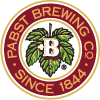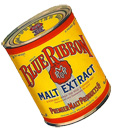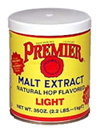Hector has asked me for my thoughts on this thread.
I brew 2.5g batches.
I use 11.5 oz. US-05 packets. I only use half of the packet.
I sanitize my scissors and eyeball half the pack and pour it into a sanitized beaker of cooled, boiled water to rehydrate. I do not sanitize the packet. Then I fold the top a couple of times, staple it, and put it into a Ziplock bag in the fridge. I haven't had any problems that I can detect. My beer tastes pretty good to me.
I am not saying what I do is the correct way to do it.
Here are some quotes, and my ideas:
“After measuring 2 grams of the yeast. I would keep it closed in the Refrigerator.” - hector
Basically I do this, although I use half of the yeast for each batch. I eyeball the amount. Very non-scientific.
“The Yeast which I use is Safale S-04 Ale Dry Yeast." - hector
I believe S-04 is the English ale yeast, and I find English beer to be a little on the sour side. I have never used this yeast.
“You really can't save opened dry yeast more than a week, maybe two.” - Yooper
“[Fermentis says to] use the remaining yeast within seven days.” - badhabit
I have let my opened, folded, and stapled yeast packet sit in the fridge (In the cheese drawer of all places!) for a month before using the second half. Not saying it is the right thing to do, but I have not had any problems, yet.
I have never had an infected beer that I know of, and I am not sure I would know why a beer tasted bad if I did.
I do not use LME or DME for anything. Not since batch #9. I am an all-grain brewer.
So, I really have no authority or idea why your beer tastes sour.
All I can tell you is what I do. I can't say whether it is a good practice or not. Probably not, but two days ago, I just brewed my 51st batch in two years, and I have never had a problem.
Good luck finding better results!
Wow, AG is a lot of work for 2.5 gallon batches, more power to you.






![Craft A Brew - Safale BE-256 Yeast - Fermentis - Belgian Ale Dry Yeast - For Belgian & Strong Ales - Ingredients for Home Brewing - Beer Making Supplies - [3 Pack]](https://m.media-amazon.com/images/I/51bcKEwQmWL._SL500_.jpg)





















































